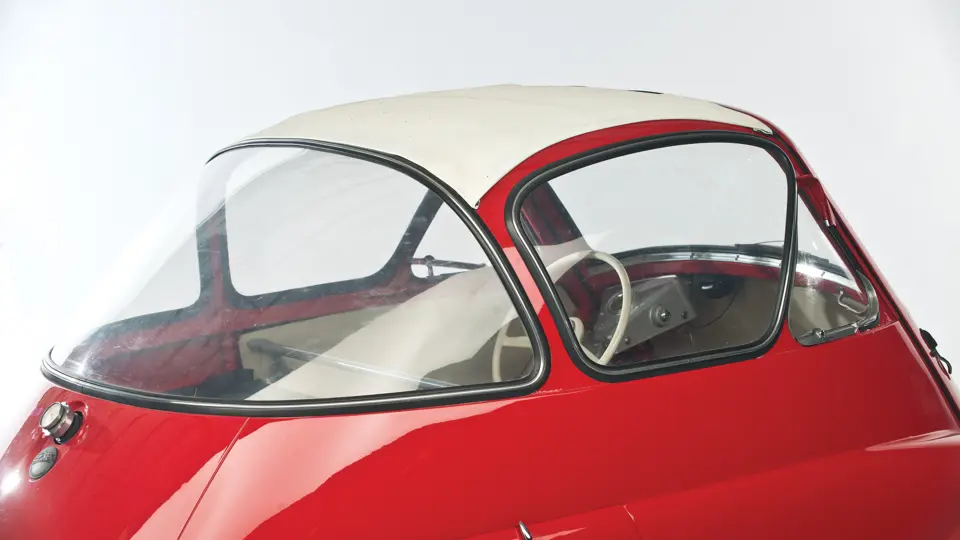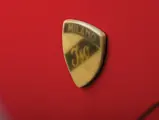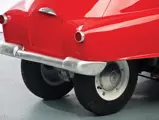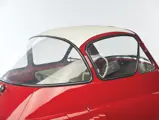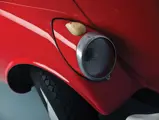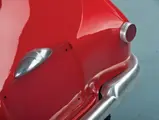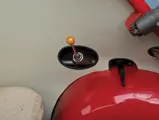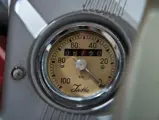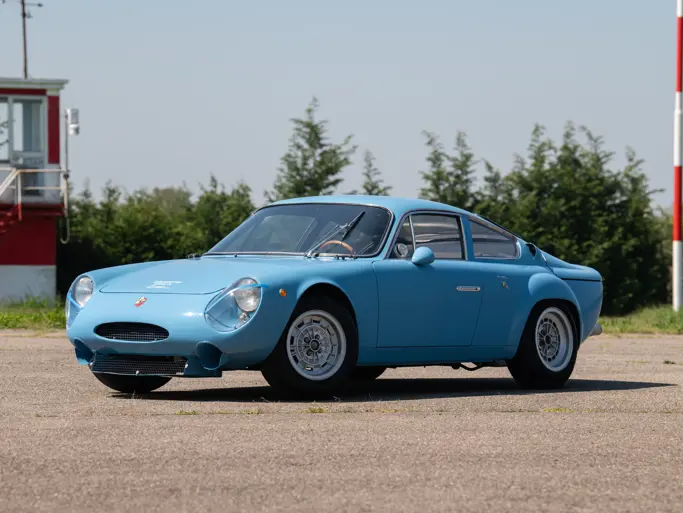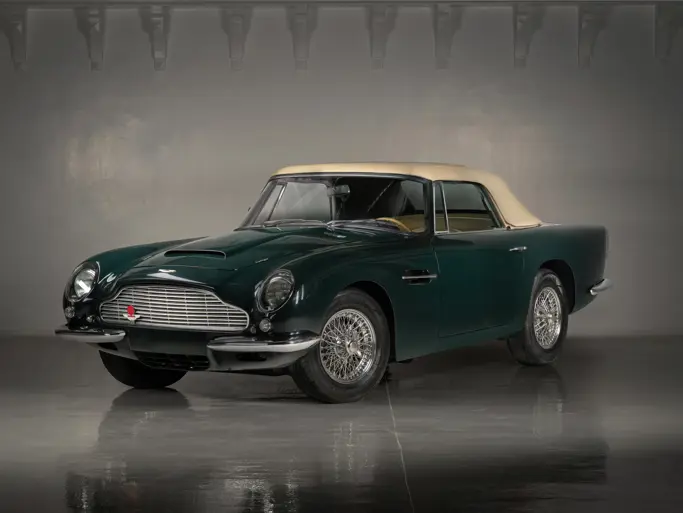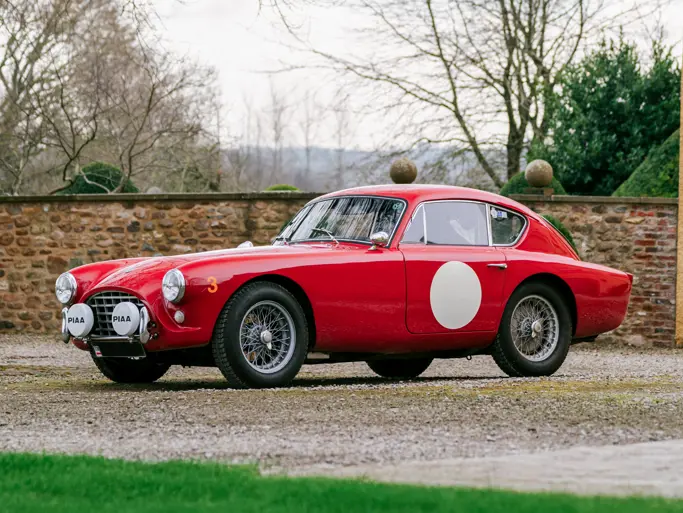A rare, late Italian, Iso-built Isetta before BMW acquisition, with original interior.
SPECIFICATIONS
Manufacturer: Iso SpA.
Origin: Milan, Italy
Production: 1,000
Motor: Iso 2-stroke
Displacement: 236 cc
Power: 9.5 hp
Length: 7 ft. 6 in.
Identification No. IMI651461
Post-World War II Italy was an industrial bazaar. With the cessation of hostilities, the country was rife with entrepreneurs seeking new ways to capitalize on consumer goods, many of them enamored with inexpensive transportation. Cisitalia, a manufacturer of sports equipment, launched both Piero Dusio and Carlo Abarth into the automobile business. Ferruccio Lamborghini started with air conditioners and tractors. For Renzo Rivolta, the entrée came via refrigerators.
Rivolta was born in 1908 to an Italian industrialist engaged in the wood-milling business. As a young adult he began looking for a business with brighter prospects, and in 1939, he purchased a company called Isothermos, a maker of heating and cooling equipment. During the war, he was forced to move it from Genoa to Bresso, in the province of Milan. In an old villa surrounded by open land, he was able to operate what in Britain was called a “shadow factory,” escaping bombardments and producing refrigerators unscathed.
By the early-1950s, Iso had branched out into motor scooters and small three-wheel trucks. Rivolta had a yearning to make small, economical automobiles, so he seized on a design by engineers Pierluigi Raggi and Ermenegildo Preti, who had patented an ovoid vehicle using a scooter engine. They named it Isetta, literally meaning “little Iso.” Just 7-1/2 feet long and 4-1/2 wide, it was shaped like an egg and had “bubble” windows. A single bench seat, adequate for two (or three if one was a child) was accessed by opening the entire front of the car. In so doing, the steering column would hinge forward on a universal joint, bringing the instrument panel with it.
Initially, the Isetta had but a single rear wheel, but a second was soon added for stability. Putting the two wheels close together obviated the need for a differential. A gear transmission gave four speeds forward and one in reverse, driving by chain to the solid rear axle. Front suspension was by modified Dubonnet “knees,” and the rear by quarter-elliptic leaf springs.
About 1,000 were built before Rivolta sold the designs and tooling to BMW and licensed others in Belgium, France, Spain, and Brazil.
This late Iso-built Isetta has been the subject of a partial restoration, with new red paint nicely complementing a preserved original interior, badges, and trim. It has the white roll-back fabric sunroof and correct appointments. The distinctive engine cover, headlamps, and flush-fitting door handle all distinguish it from the later (and more numerous) BMW Isetta. A rare early example, it is the Isetta as Raggi and Preti intended it.

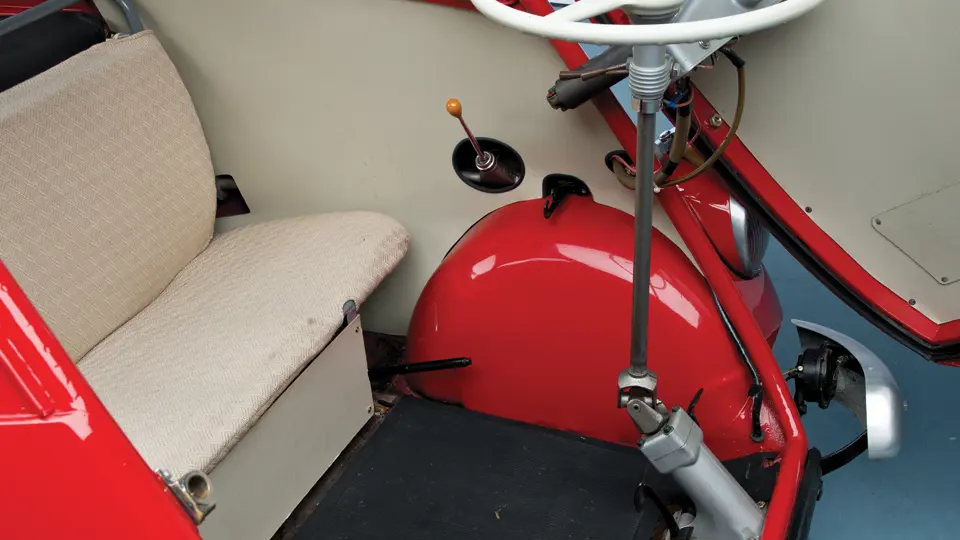


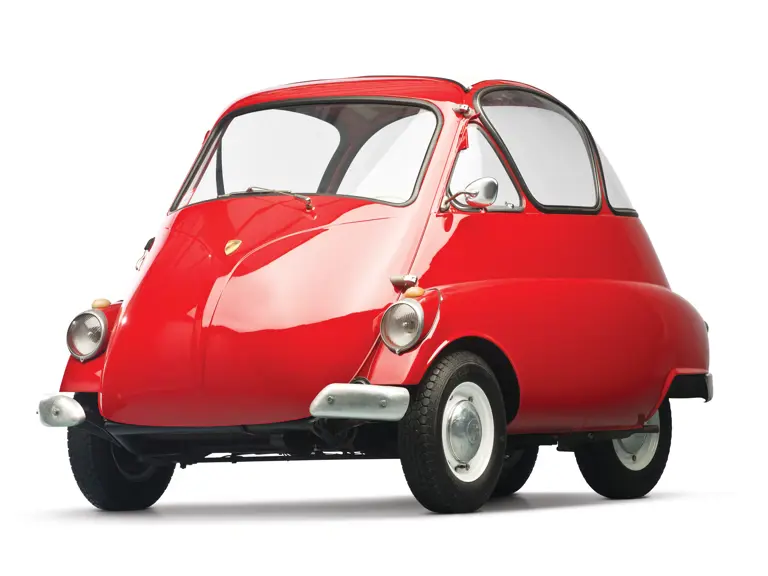
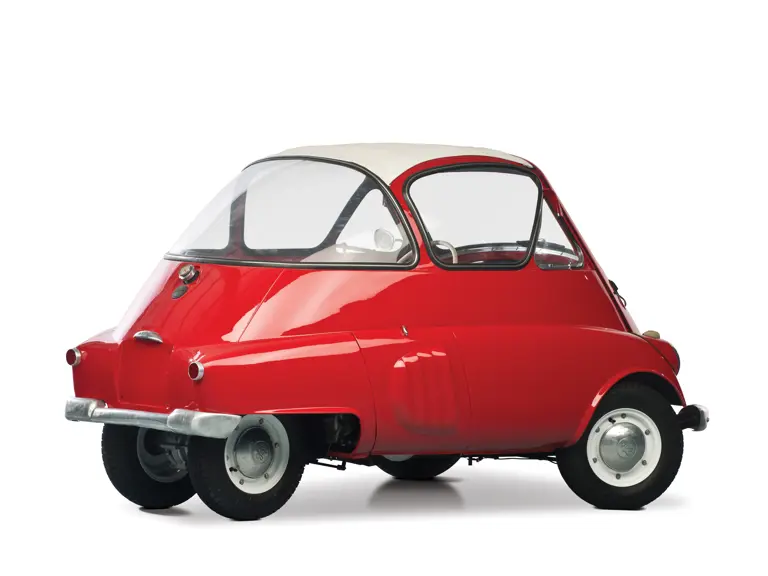
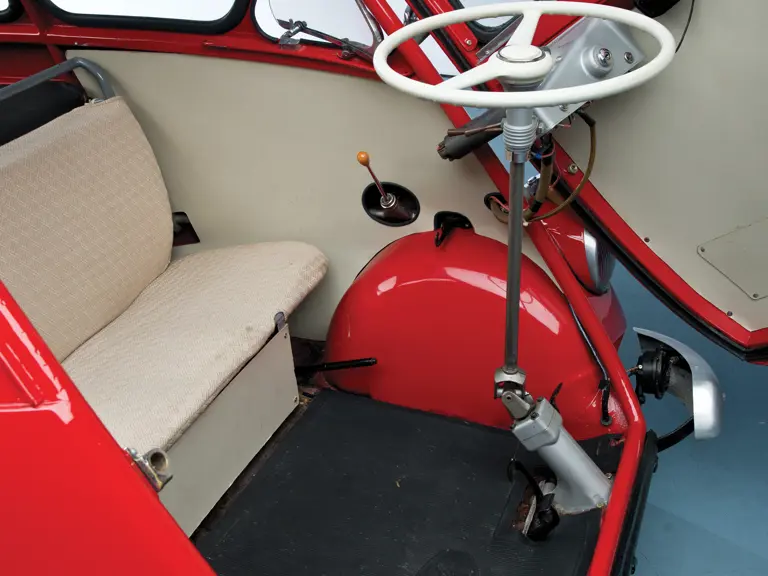

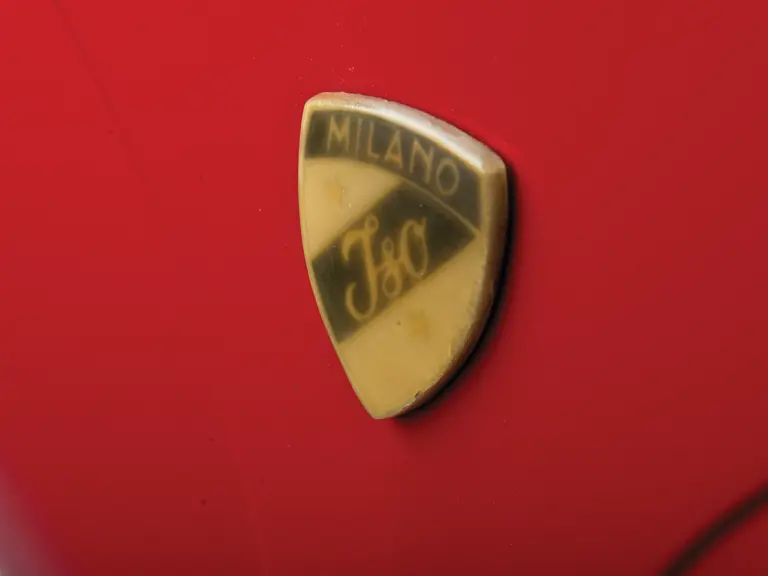
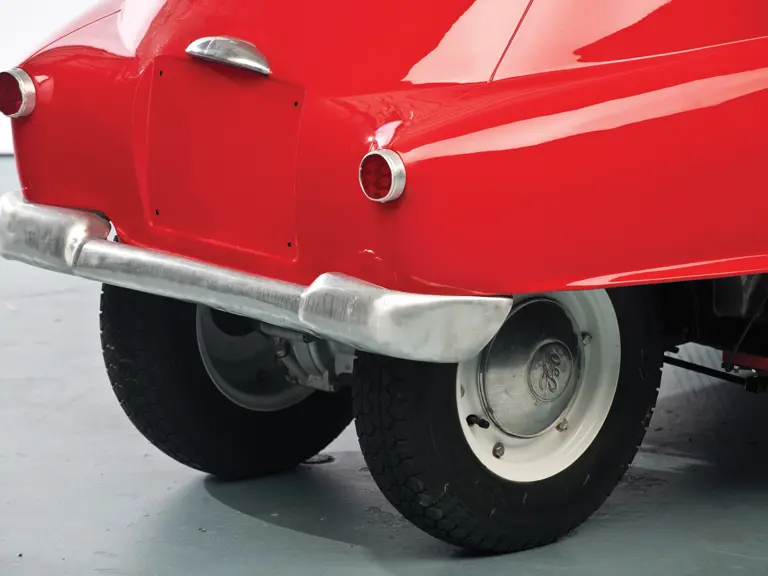
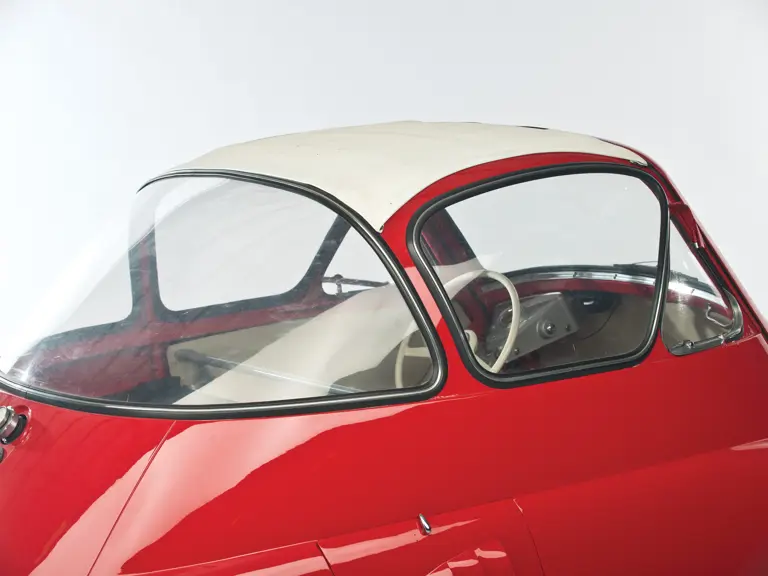

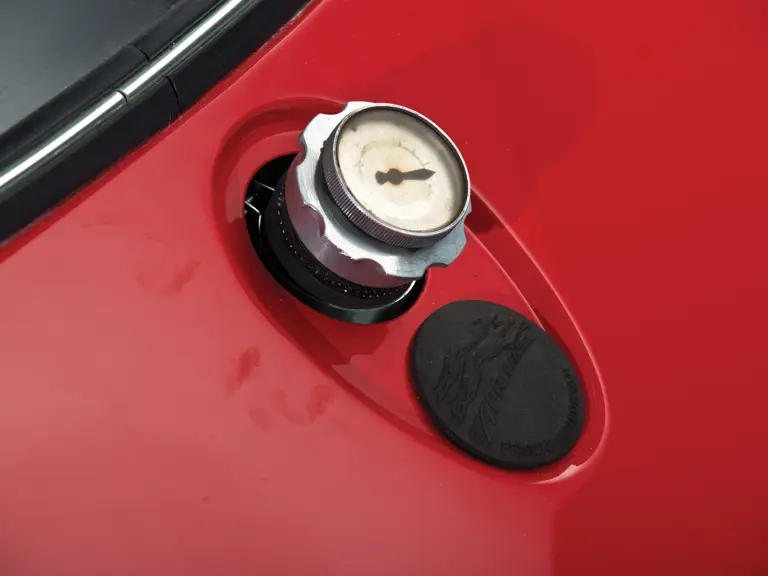
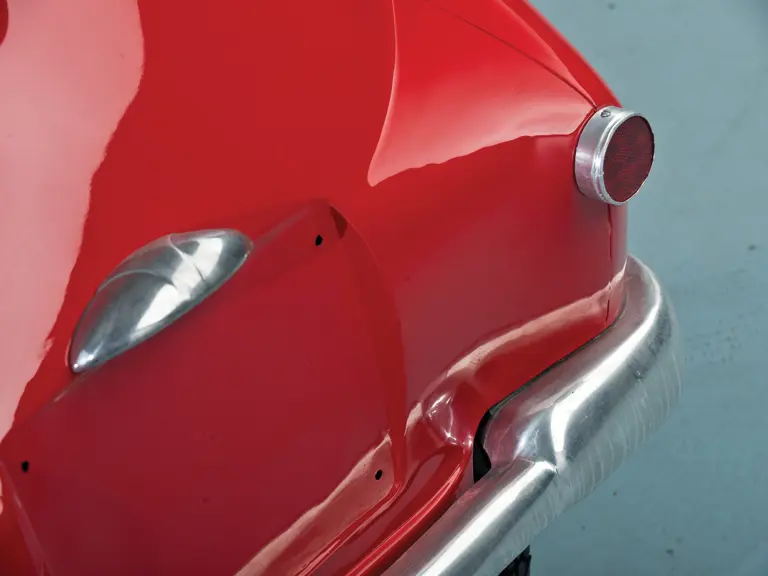
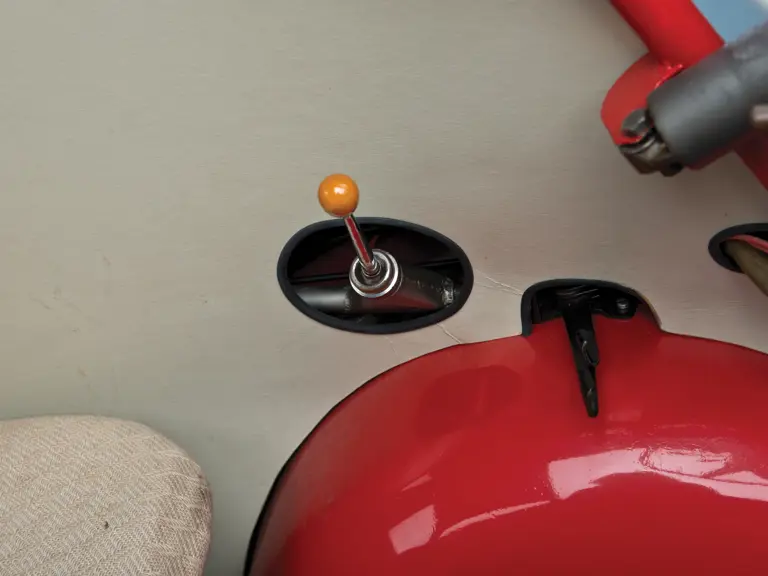


 | Madison, Georgia
| Madison, Georgia


